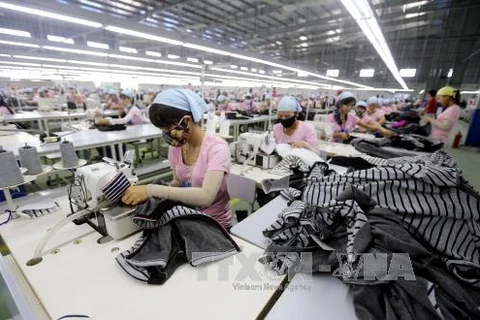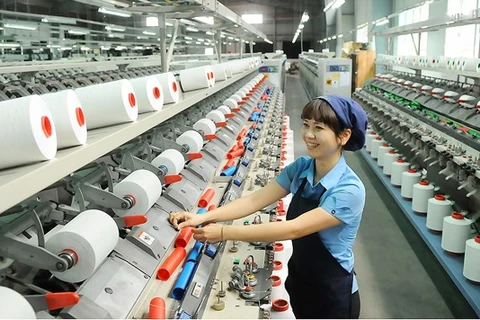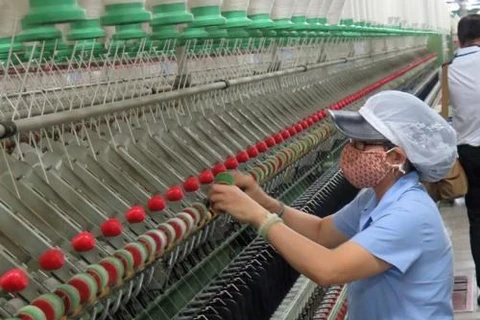 Vietnam’s textile and garment industry has targeted a growth in exports of 6.5-7 percent to 30 billion USD this year (Photo enternews.vn)
Vietnam’s textile and garment industry has targeted a growth in exports of 6.5-7 percent to 30 billion USD this year (Photo enternews.vn) The target was announced by Le Tien Truong, General Director of the Vietnam National Textile and Garment Group (Vinatex).
Truong said the development of the textile and garment market at home and abroad would continue improving due to growth in the US economy and in consumption in the market. Such conditions would support the domestic textile and garment industry in reaching their target in export values this year.
“To reach this target, the industry needs strong performance by enterprises in production and business, and of the state in management by supporting the industry’s development, as well as development of infrastructure in the nation,” Truong told the Vietnam News Agency.
Further, the enterprises should improve productivity, reduce time needed to deliver cargo and strengthen distribution systems to international markets.
Garment and textile enterprises have received enough orders to keep them busy through the first quarter of this year, he said.
He also predicted that this year, Vietnam’s garment and textile sector will face numerous challenges, including a lack of support in taxation policies, as several important trade deals, such as the EU-Vietnam free trade agreement and the Trans-Pacific Partnership, will not become effective in 2017.
Also, competition will become more fierce, as other countries continue attracting orders thanks to their advantages in tax and exchange rates, he said, adding that the instability in the EU economy will also affect the industry. However, this year, the textile and garment industry will prepare to take advantage of business from the Vietnam-EU FTA, which comes into effect in 2018, he said.
After the FTA is in place, Vietnam could compete with other countries exporting garments to the EU through the Generalised Scheme of Preferences (GSP), which allows developing countries to pay less or no duties on some exports to the EU. Those countries included Cambodia, Bangladesh and Myanmar.
Meanwhile, other bilateral and multilateral trade agreements will bring more opportunities in exporting textile and garment products to small and medium-size enterprises, Truong said.
In 2016, Vietnam’s apparel also saw lower than expected results, with 28.3 billion USD in exports, up 5.7 percent year on year, Truong added. Vinatex earned over 2.5 billion USD, an increase of 5 percent over 2015, with a pre-tax profit of over 41 trillion VND on a 5 percent year on year increase.
Also, its employees’ average income rose 8 per cent over the previous year, to reach 6.7 million VND per month. Last year was gloomy for the world apparel sector. Major importers, including the US, the EU and Japan experienced low or decreased demand for garment and textile products, he noted.
Truong also said that the results showed the great efforts made by the sector, as Vietnam recorded higher growth than major competitors, such as China, India, Bangladesh and Indonesia.
The industry gained strong results because enterprises focused on increasing productivity and ensuring deadlines on delivering goods, he said. Further, the State’s reforms on administrative procedures for saving money and time improved the business environment and created great support for garment exporters by increasing their competitiveness and exports.-VNA























